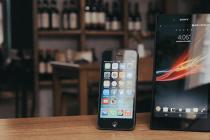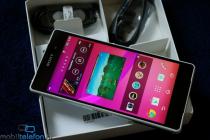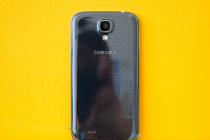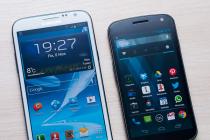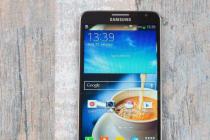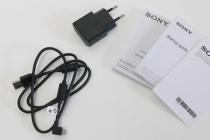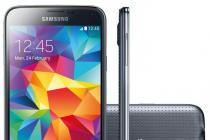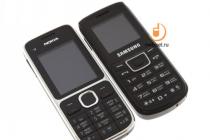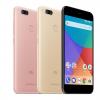Problem solved
Pluses: Screen, camera, android 4.4. Disadvantages: The charging port breaks down, it was replaced for me for 1500 rubles, it happened after 2 years of use. + unplug the chargers from the socket after charging is complete, as they break so very quickly. Commentary: This phone is not outdated, as some people write here. Having bought this smartphone, there is no need to buy a newer one, tk. it has everything you need and don't need more .. The camera is excellent, I don't need more. + I often shoot 360 photos using the google camera application, and there the image resolution is forcibly reduced by the application, so that the S6 or S7 will not show the best result. Higher screen resolution is not needed, because this will only load the system, and the difference will be 0, since the human eye does not need more than 300ppi, because points can be distinguished at this resolution only with a magnifying glass. The charge lasts all day at my rate of use, so to speak, but I don’t need more - I don’t need to put it on charge at night. Android 5+ is not needed here, I stay on android 4.4, tk. in terms of functionality, it is the most convenient here, I do not like the later versions, and all the necessary applications work on 4.4. I don't see any point in buying an S6 or S7 - they cost 5 times more, but in practice they are not particularly better.
Samsung Galaxy S4 (I9500, I9505) is the fourth and most anticipated flagship from Samsung. The smartphone was announced on March 14, 2013 and this event caused an unprecedented excitement. When developing this device, the company took into account all the developments of the past years and made simply amazing software with a lot of functions and useful "chips".
Like past devices, the Galaxy S4 has a plastic case. For many, this fact causes indignation and criticism, but let's find out - is it so bad? The smartphone Samsung Galaxy S3 used stylish, glossy plastic with an interesting texture, and no matter how much the device was carried in your pocket and fell on the asphalt, the damage was always insignificant. Try dropping your Nexus 4 onto the pavement with its glass lid and see what happens.

The body of the smartphone is only 7.9 mm thick, measures 136.6 x 69.8 and weighs 130 grams. It is assembled very efficiently and with all the desire it is not possible to find any creaks and backlashes.
Video: Samsung Galaxy S4 appearance
In the hand, the smartphone is somewhat "denser" than its predecessor Galaxy S3, but nevertheless it is quite comfortable to hold the device. Although, in order to reach the top, I personally have to move it in my hand.


The plastic is very pleasant to the touch, although it seems more slippery than that of its predecessor - Galaxy C3.
Screen.

The display in the Samsung Galaxy S IV is beyond praise. This is a full-fledged Super Amoled sensor with Full HD (1920 x 1080) resolution. Almost ideal viewing angles and rich colors follow from this. The pixel density is 441 ppi, which, of course, is much higher than the sensitivity limit of the human eye.
Video: screen in Galaxy C4
Corning Gorilla Glass 3 is installed on top of the matrix.
You can sing laudatory odes for a long time, but this cannot be taken away - the display here is the best for today.
Camera.
The smartphone is equipped with a 13 megapixel Exmor RS sensor manufactured by Sony. This is one of the best cameras on mobile devices and even in its own flagship Sony Xperia Z, the manufacturer uses a "weaker" sensor. As a result, the photo quality on the Samsung Galaxy S4 is very high. True, at the start of software sales, it was somewhat crude and some users were faced with an involuntary reboot of the smartphone, but this is already in the past. Below are some pictures.
Camera Photos




The camera interface is made very convenient and now you don't have to scour the settings to select shooting modes. It is enough to press the button under the "shutter" icon and you will see a convenient wheel with scrolling modes.

There are 12 of them here, and if you click on the icon in the lower left corner of the screen, then they will all appear in the form of a grid.

List of camera modes:
- Automatic (full automatic)
- Retouching (Shooting Faces with Retouching)
- Best photo (multiple shots and selection)
- Best face (multiple faces to choose from - super for self portraits)
- Sounds and photos (snapshot with background sound for 9 seconds)
- Burst (Burst)
- Animated Snapshot (creates editable animation from frames)
- Saturated tones (aka HDR)
- Corrector (remove strangers from the picture)
- Panorama (great tool can do 35 megapixel panoramas, example)
- Sports (shooting sports events)
- Night (shooting at night and in low light)


There are also a lot of settings here, but for video there are only two.

The smartphone is capable of recording videos in Full HD resolution and does it just fine. Of particular note is the video stabilization system, which works much better than the competition.
Video from the camera Samsung Galaxy S IV
Iron and other characteristics.

The flagship of 2013 is initially produced in two modifications with indexes I9500 and I9505. Both smartphones differ in the actual presence of LTE and, as a result, in the processor. The octa-core Exynos 5 Octa 5410 cannot work on LTE networks and is used in the Galaxy S4 GT-I9500. It has 4 cores with a frequency of 1.6 GHz and 4 with a frequency of 1.2 GHz and it is worth noting that they cannot work at the same time. We found out how productive this solution is in tests.
In the second version (GT-I9505) LTE is present, and the processor here is the no less powerful Snapdragon 600 chip. The PowerVR SGX 544MP3 chip is used as a video accelerator. The amount of RAM is 2 GB. As for the built-in one, here we have 3 options: 16, 32 and 64 GB. True, the system in Galaxy C4 takes up quite a lot and in the "youngest" version of the smartphone the user out of 16 is left with a little less than 9 GB. Why this is so, you can read the link below.
Finally, it is worth mentioning the smartphone's battery, because now its capacity is 2600 mAh, which is enough for a day of work under full load.
Software.

The device runs Android 4.2.2 with Nature UX proprietary shell. As mentioned at the beginning of the article, Samsung has done a tremendous job and contributed a large number of all kinds of applications and utilities. In this review, I will not analyze each program, but rather dwell on each application in detail in the following articles.
Contents of delivery.

Actually, nothing has changed much here, and the S IV package is quite standard and does not differ in any way from the previous flagships. In addition to a heap of all kinds of "waste", the smartphone comes with a battery, a 5 V 2 A charger, a USB cable and headphones with earbuds of different sizes.
Comparison with others.

If you are the owner of past devices in the Samsung Galaxy line and are thinking about buying this "monster", you will probably want to know its dimensions in comparison with your smartphone. A few photos taken together with the devices I currently have will help you with this.
S Nexus 4

Comparison with the S3 and the "firstborn" I9000

And with the "giant" Galaxy Note


Comparison of the two flagships


And finally the thickness

That's all for now. This review is far from complete and is constantly being improved. If you have something to add, please write in the comments.
It has long earned its reputation among buyers and even has its own loyal fans. There are many models of a wide variety of equipment in the line. The smartphones of this well-known company are especially popular. In this article, we will consider one of the most common models today - Samsung Galaxy S4, the technical characteristics of which are still of interest to many, despite the fact that the phone is not a novelty of the season.
Appearance
It is the design of the device that is an extremely controversial topic. After the release of the model on the world markets, there were many claims to the Korean manufacturer about the device. The thing is that visually the new product practically did not differ from its predecessor. In fact, this is one of the main problems of the entire series of Samsung smartphones. There is no design at all, all products are made in the same style, as if the manufacturer deliberately seeks to depersonalize their models. Characteristics of Galaxy S4 ", in terms of external performance, is in many respects similar to all descriptions of the design of devices from the company. The flagship has simple, streamlined from all sides, uncomplicated forms. for constant scratches, does not deter you from purchasing it. It is surprising that even despite such a faceless design, "Samsung Galaxy S4" (whose technical characteristics cover all the shortcomings of the case) is kept in the top of the best-selling models in the world. Sly Korean manufacturers are not worse than you and me understand that appearance is far from being the most important factor when choosing a phone. The company frankly declares that it is not going to change its strategy in the near future. However, perhaps it should be done, especially with such production capacities. Samsung Galaxy S4 ", whose characteristics are largely identical, has slightly less rounded corners. s, slightly wider bezel and a different flash location. The dimensions and weight of the device remain unchanged. The innovations include materials: fashionable polycarbonate has replaced ordinary plastic. This is good news, as there is a possibility that the new case will be more scratch resistant.
Ease of use
The model keys and connectors remained in place. The side bezel that frames the display has been slightly reduced, which made it possible to fit the characteristics of a larger screen into the same dimensions of the Samsung Galaxy C4. This is certainly commendable, because the large screen will appeal to everyone, but the huge size confuses many. It is also pleasing that the back cover remains removable, that is, the user has the opportunity to independently replace the battery, insert a SIM card without additional devices, etc. Initially, the phone came out in two colors (black and white), a little later, colored cases appeared, which allows everyone to choose a gadget in their favorite color scheme.

Screen
Once on the path, Koreans invariably follow it. The new "Samsung Galaxy S4" (screen characteristic 1920X1080 pixels) is equipped with a Super AMOLED display. The diagonal is 126 mm, full and over 441 pixels - the pixel density really delighted the buyers. In general, the screen is quite good, the brightness is quite sufficient, wide viewing angles are definitely a plus, the smallest elements on the display are clearly drawn. The screen is touch sensitive. "Samsung Galaxy C4", the characteristics of which are considered in this article, is distinguished by another interesting feature - the ability to control the sensor with gloves. This is very convenient, especially considering the harsh Russian winters.

Camera
Immediately, we note that the experience of creating cameras, accumulated by the Korean company for many years, was not in vain. The new smartphone received a good camera. Of course, this applies directly to the photo processing algorithm itself, because the Exmor R (camera module) from Samsung was developed by Sony. A back-illuminated BSI matrix with a resolution of 13 megapixels is used. There is also one aimed, as a rule, at creating self-portraits and video calls (its resolution is 2 megapixels). The manufacturer promises users the ability to simultaneously shoot from both cameras. An entertaining addition will be software that can compose and process the received materials, creating whole stories, accompanied by a sound track. There is no dedicated button for photos on the body, but this is not required, because you can release the shutter using the volume key. In general, Samsung Galaxy S4 is equipped with a sufficiently high-quality camera. For many, the characteristic in numbers does not carry any practical information, so you can view photos taken by the flagship on the street and indoors.

Performance
The hardware platform of the smartphone is based on the most powerful SoC Exynos 5410 Octa. It includes 2 quad-core processors (ARM Cortex - A15 with a frequency of 1.9 GHz and an ARM Cortex - A7 with a reduced frequency of 1.2 GHz.). The application option offered by the company is obvious: under a serious load, the first is used, and to perform those tasks that do not provide significant computing power, energy efficient ones are replacing the top-end cores. As for image processing, here Samsung Galaxy S4 (graphics performance, as already mentioned, is decent) is supported by a specialized graphics core PowerVR SGX 544MP3.
Autonomous work

The flagship is equipped with a removable battery, which may be extremely necessary, for example, in situations with a swollen battery (which sometimes happens) or in cases of long trips, when it certainly does not hurt to get a second battery. The smartphone also supports a function that is indispensable for all advanced users. They will tell you more about the capabilities of the Samsung Galaxy S4 battery.
- Internet. With Wi-Fi turned on and the browser page refreshed every minute, the gadget can withstand about 8.5 hours of operation. All this at 70% brightness and savings off.
- Reading. In conditions of disconnected wireless networks, the phone remains charged for 10.5 hours while automatically turning pages.
- Video. It is possible to play continuously for 10.5 hours, in contrast to Samsung's characteristics are slightly lower (6 hours of battery life in the specified mode).
In general, it can be noted that the battery life of the flagship is satisfactory. However, you have to constantly monitor and disable unnecessary services. In this regard, the phone is similar to powerful smartphones from other well-known manufacturers. If you keep all apps and services on all the time, the charge will barely last until the evening.

Samsung Galaxy C4 Duos (specifications)
In fact, it is a miniature copy of Galaxy C4. Everything here is a little smaller: the screen, the body, the camera resolution, and the performance. The main advantages of the model are compactness, more affordable price and, of course, the ability to install two SIM cards at the same time. This moment is often decisive when choosing a particular smartphone. In modern conditions, when you need to constantly be in touch, it is very convenient to have one device and several SIM cards in it. This allows you to save on calls between different operators and not carry several devices with you.
Remarks
With constant use, the Samsung Galaxy C4 smartphone (the characteristics have been reviewed in detail) gives out camera malfunctions, which were subsequently corrected in the new firmware.
Like most powerful phones, the upper part of the lid heats up, but this is only under serious loads.
There are also some complaints about the Super AMOLED display and the difficulty of using it on a sunny day.
conclusions
"Galaxy S4", like "Samsung Galaxy S4 Mini", the characteristics of which are slightly lower, are certainly high-end smartphones. The company does not disappoint its fans and continues to produce quality products.

As for prices, everything is standard here: the starting price at the beginning of sales is 30,000 rubles, but it is rapidly falling with the release of new models. If the main thing for you is not the appearance of the device, but its practicality and "filling", you can safely purchase "Samsung". For many years, the phones of this company have been in the top of the best and are the main competitors of the IPhone, Sony, HTC and others.
 |
 |
|
 |
 |
 |
 |
 |
 |
Contents of delivery:
- Telephone
- Battery
- Li-Ion 2600 mAh battery
- Charger with detachable USB cable
- Instructions
- Guarantee
Positioning
Samsung has achieved success with the Galaxy line, which is reflected in the fact that the Galaxy S3 sold 20 million units in the first 5 months, and the total circulation of this device will exceed 60 million units. If we talk about the previous device, the Galaxy S2 was also a successful product, but in the first 5 months only 10 million units were sold, which is not bad at all, but does not sound as beautiful as in the case of the Galaxy S3.
In 2013, Samsung has two tasks - the first and the main one to overtake Apple in sales of a single product, that is, to make the Galaxy S4 beat the iPhone 5, and also to keep sales at the time of the release of the iPhone 5s or any other Apple model. The company calculated that it could achieve sales of 40 million units in the first five months. The second task is to provide a flagship smartphone, a universal solution for different groups of consumers, among which a noticeable part are the owners of previous devices of the Galaxy line - primarily the Galaxy S2.
If we start from the market, the shares of companies and what happened in 2012-2013, then we can seriously consider two smartphones - Apple iPhone and Samsung Galaxy, these two lines constituted the main competition, while all the others acted as catch-up and could not even come close to these products. In the market for Android smartphones, the gap between Galaxy and its closest competitors in sales is not several times, but orders of magnitude, and this is noticeable with the naked eye. The gap between the iPhone and the latter in sales is significant, but not by orders of magnitude; in the third quarter of 2012, the Galaxy S3 even temporarily took first place in world sales. With the release of the S4, the situation may change in Samsung's favor.
For consumers, Galaxy S4 is the most impersonal device in terms of design, which repeats the appearance of previous devices in the line, very much resembles them. If we talk about whether this is good or bad, I don’t presume to judge, but I can argue that this approach works and sales speak for themselves. Look for a device that is bright in terms of design, the Galaxy S4 is unlikely to suit you. This model is aimed at a very wide range of consumers, as a result, it was made as inexpressive as possible. A bar that everyone will be able to turn into their own individual, unique phone at the expense of the screen, selected programs and accessories. How much this approach will play, we will see in a month, but for now we can say that all the prerequisites for success are there (just remember the discussions that are raging around the device).
In my opinion, the age audience of this device is maximum - from children to elderly people, and the number of functions aimed at adapting the phone for such different consumers is very large. This also applies to the way of life - a very great potential has been laid in the phone, which is difficult to underestimate. A universal solution that looks very strong against the background of any device on the market. And the question is not that it has certain functions - it is a constructor in which everyone chooses the capabilities he needs and disables those that are not needed. I will give just one example - the control of the screen with gloves was proposed by Nokia in the Lumia 920, but you did not have the opportunity to disable this setting for the screen - that is, regardless of whether you use this option or not, it consumes a little battery power. ... In the Galaxy S4, you are offered an adaptive screen and the ability to turn it off - that is, if you do not plan to use the function or will only use it in winter, you can safely turn it off and save energy, that is, slightly extend the operating time of your device. The entire ideology of the Galaxy S4 is built on exactly this approach - a constructor of separate functions, in which you can flexibly customize everything for yourself. If in the Galaxy S3 this constructor was quite interesting and allowed to achieve an increase in operating time of 10-25 percent, then here the difference reaches from 10 to 40 percent in operating time. The same phone can behave very differently depending on the settings. It can be super-fast, or it can just be fast and long-lasting. It all depends on you and what you want from the device - perhaps this is a completely different ideology, different from Apple, where you are given a hard-coded set of functions, which by default are considered the best for everyone. If you are unlucky and you think that a function you do not need or does not work the way you want, then as a rule, you can not do anything about it. Within Android, a completely different approach, which has been strengthened and brought almost to the absolute in the Galaxy S4 and subsequent products.
Design, dimensions, controls
There have been no striking changes in the design of the flagship, it is about the same look as the Galaxy S3, Note II and a dozen of similar models from the company. Is it a shame? Maybe. But they buy it in millions of copies, and I told you why the design issue was decided in this way.
Many expected that with an increase in the diagonal of the screen to 4.99 inches, the dimensions of the device would increase in comparison with the Galaxy S3, but it became thinner and a little narrower (3 grams minus, 0.7 mm from the thickness - 136.6x69.8x7.9 mm, 130 grams). Considering that all other characteristics, including the battery, have improved, then the company can be commended for this. And immediately scold her for trying to solve the problem of plastic, which is far-fetched by inventing other hypostases. So at the presentation they said that the case is very reliable, as it is made of polycarbonate (this is just one of the types of plastic and nothing more). Starting from Nokia N9, polycarbonate is used in a number of Nokia models, but there is a completely different design - it is more massive. It's like comparing a plastic bag and something more massive, but made of the same plastic. It seems like the same thing, but the result is different.

The lid is not brittle, it can be bent a lot, which is great for taking the appropriate photos. But in practice, there were no problems with covers in SGS3 and other models. That is, there is a solution to an imaginary problem and indulging the crowd, which is a deliberately losing move. Either it is necessary to change the materials in order to give what a part of the audience supposedly wants, or not to focus attention on it at all.


Changed the quality of the coating, an attempt to wipe it showed that scratches appear, but due to the points that make up the picture, they are not visible. The cover is overwritten much slower and worse, however, we cannot say that this has become a problem for the Galaxy S3. Most of the complaints about this came from those who had never used the device and cited this argument as an argument against the Galaxy S3.
The side edging, as in the Galaxy S3, is made to look like metal, but it is plastic, which can be scratched if desired (in practice, it is almost impossible to get scratches on the edging, even if the device is dropped).
Initially, the model is available in two colors - white and dark gray. I had both devices, I like the traditionally dark gray, but we can say that this is a matter of taste and nothing more. Later, there will be about 5-6 different color solutions for this model, as happened for the Galaxy S3. It can be expected that additional colors will start coming out in September-October, before the New Year holidays, and their number will be maximum. In January, there will be options for the La Fleur collection.


The build quality of the phone does not give rise to any complaints, the back cover fits snugly to the body and is easy to remove. A slightly different shape of the side edges creates a different impression, when you take the device in your hand, you feel its edges. Of course, this difference will become noticeable for those who are already used to the Galaxy S3, but for example, when switching from S2, there is no such feeling at all.
On the front surface, above the screen on the left, there is an indicator that can blink blue when the device is operating. It can be turned off altogether, or it can be configured to work when recording a voice (dictaphone), for notifications. That is, you are free to choose how this indicator will work, which is convenient.
The central key is mechanical, on either side of it are touch-sensitive buttons (you can set the backlight time for them). On the left side there is a paired volume rocker, it is medium-hard, comfortable when talking. There is an on / off button on the right side.
If you look at the top end, you will see an IrDA window (for controlling household appliances), a 3.5 connector and also a second microphone hole (the first is on the bottom end and there is also a microUSB connector).
Comparison of this model with other devices, you can see in the photos below.






Samsung Galaxy S4 and Apple iPhone 5


Samsung Galaxy S4 and Sony Xperia Z


Samsung Galaxy S4 and HTC Butterfly


Samsung Galaxy S4 and Samsung Galaxy Note 2
Display
Now a few words about the screen. As you remember, the main gripe from the team of superhumans, endowed with superpowers (X-ray vision, a hundredfold magnification of the image on the retina) was the presence of PenTile (the formation of a pixel from a smaller number of subpixels). We, ordinary people reviewing devices, even specially got microscopes and lenses to show the terrifying PenTile and prevent superheroes from making the fatal mistake when choosing a phone. In the Galaxy S4, things are even worse - the dastardly engineers changed the structure of the subpixels (they are now equal in size) and created a picture density of 441 dpi. It seems to me that even superhumans will need to use super magnification to see a single pixel - it is impossible to see the structure of the screen if you are not from the planet Krypton. But I am sure that many will criticize PenTile and this device out of good old habit. Stupidity is usually a long-lasting phenomenon.

Screen diagonal 4.99 inches, type Super AMOLED HD with a resolution of 1920 × 1080 pixels (441 dpi). One of the user's misconceptions is that Super AMOLED screens are too bright, saturated and unnatural. In the screen settings, you can choose any display option, including those typical for screens from other manufacturers (dimmer, natural colors). It is interesting that other manufacturers' screens give out the maximum possible and it is impossible to make them brighter, more contrasting, and richer in colors. At Samsung, the flexibility is maximized.
Compared to the Galaxy S3, the "Optimize display" option has been added. This is the most interesting setting, since the device analyzes the level of illumination around and, depending on the conditions, sets the contrast, brightness, plus adjusts the colors on the screen. It turns out that white looks white in almost all conditions. Another Adobe RGB setting, but it has almost no effect on the image display quality, the latter does not change noticeably compared to other settings (I was not able to notice this).
The screen looks great in the sun, there are no problems, the readability remains at the level of the Galaxy S3. Considering that the weather in Moscow is not too sunny, I will take more photos of the screen in the sun in Asia and we will add them to the review.


Traditionally, Samsung has been ahead of other manufacturers in terms of the quality of screens, as it independently produces and develops them. We can say that the difference between the screen of the Galaxy S4 and Galaxy S3 is not too huge - it is noticeable in the power consumption, which has decreased in the advanced settings. But this screen remains the best, it has no direct competitors (in comparison photos, it is not very noticeable due to the fact that photos do not convey the sensations of the screen).
It is clear that those who want to scold this device will be able to say that the maximum display settings are a huge disadvantage, because the default setting is maximum brightness and color saturation. But for reasonable people, this is the very constructor in which they can choose what they like and customize the device for themselves.
Comparison of displays (Roman Belykh)
Samsung Galaxy S IV and Samsung Galaxy S III
Brief screen parameters SGS III:
- Diagonal: 4.8 inches
- Resolution: 720x1280 pixels
- Matrix: SuperAMOLED
- PPI: 306
The brightness of the matrix backlights is about the same. Warm shades of color are more pleasant and natural on the screen of the Quartet; white also looks good. Green is slightly better expressed on the "three", but the blue is less saturated. Tilting the Galaxy S III's display takes on a slightly greenish tint and slightly dims. On the Galaxy S IV, brightness drops only minimally at corners.
As for PenTile. If you look closely, you can find it on the Galaxy S III. The Galaxy S IV also has PenTile, but in a different way. Due to the high resolution, it is impossible to see it with the naked eye.






Samsung Galaxy S IV and Sony Xperia Z
Brief screen parameters Sony Xperia Z:
- Diagonal: 5 inches
- Resolution: 1080x1920 pixels
- Matrix: TFT-LCD
- PPI: 441
The brightness of the matrix backlight is slightly higher on Sony. Warm color tones on the Xperia Z appear somewhat oversaturated (yellow is closer to red). With blue, in most cases, it is quite a disaster: instead of pure blue, the Xperia Z displays it closer to purple. With gray on Sony, too, not everything is in order - it turns yellow. The depth of black is not as rich as the Galaxy S IV. White is slightly better on Sony. Viewing angles are another story: Sony's screen fades sharply and the contrast decreases.






Samsung Galaxy S IV and HTC Butterfly
Brief screen parameters of HTC Butterfly:
- Diagonal: 5 inches
- Resolution: 1080x1920 pixels
- Matrix: Super LCD3
- PPI: 441
Oddly enough, but the quality of the screens of Samsung and HTC is approximately the same: pure white, deep blue, natural gray (HTC has a little lighter)! There are two differences. The first is the viewing angles: slightly tilting the HTC display decreases the brightness slightly. Secondly, the green color is a little brighter on HTC.






Samsung Galaxy S IV and Apple iPhone 5
Brief screen parameters of Apple iPhone 5:
- Diagonal: 4 inches
- Resolution: 640x1136 pixels
- Matrix: LED-backlit IPS LCD
- PPI: 326
Definitely, the brightness of the matrix backlight is higher on the iPhone 5, not much, but the difference is noticeable by eye. The color rendition on the Apple phone is a little calmer, softer. Gray is more natural on the Galaxy S IV, but green is better on iPhone 5. The viewing angles are approximately the same.






Conclusions compared to screens
Frankly speaking, I did not expect that almost all the presented smartphones will lose out to the Galaxy S IV in many respects. The only device that came closest to the SGS IV matrix was the HTC Butterfly. The Sony Xperia Z has the worst screen. The Galaxy S III's display is not bad, but the matrix on the iPhone 5 is slightly brighter and the colors are much more natural.
Battery
The phone has a 2600 mAh Li-Ion battery (2100 mAh in the Galaxy S3). The increased battery capacity and lower power consumption of the screen, in theory, should have brought a gain in operating time. But the processor has changed (the version with Snapdragon 600 or Exynos 5410 Octa - I have the last option), and also there are many additional functions that negatively affect power consumption.
First, it all depends on what functions you use in your work (AirView, gesture control, gloves control, and so on). I tried out-of-the-box battery life when using it in typical mode, just like the Galaxy S3. It turned out that the increase in battery life was about 15 percent, which is not so bad, but it is fully described by the increased capacity of the battery.
Secondly, I tried to turn on the power saving mode and see how the power consumption changes from the standard - it increased by 20 percent. This was the case with the Galaxy S3 as well when using these settings. But by turning off most of the sensors that I do not need at the moment, I achieved an increase in operating time of 40 percent! In total, it turned out that in terms of energy efficiency, this device is again out of competition, only you need to be smart about this issue. The question remains open how much gesture control or AirView is needed, but here everyone decides for himself on his own (considering the gain in operating time, I turned them off - these chips are not important to me at all). And you can also turn off S Voice, which you may not need at all - this is voice control. I would like to emphasize that everyone can customize the device for themselves, this is in the full sense of the designer, where you can choose the most optimal settings.
On the plus side, in the Octa processor version, video playback has grown to 12.5 hours (depending on the codec), which is about 25 percent more than for the Galaxy S3 or for the second version of the Galaxy S4. The second point is related to the fact that web browsing has become the most gluttonous function, regardless of the device (using the Chrome browser leads to sad consequences - the battery drains before our eyes, a standard browser consumes at least half the energy with the same screen backlight level ).
In my typical use, the Galaxy S3 survives until 3-4 p.m. (Galaxy Note II until late in the evening). In the case of the Galaxy S4, I got the battery life almost on par with the Galaxy Note II, which is surprising given the smaller battery (although the screen size is smaller).
Camera
The camera capabilities of this device are described in a separate article.
USB, Bluetooth, communication capabilities
Bluetooth... Bluetooth version 4.0 (LE). When transferring files to other devices that support this technology, Wi-Fi 802.11 n is used, and the theoretical transfer speed is about 24 Mbps. Testing the transfer of a 1 GB file showed a maximum speed of about 12 Mbps within three meters between devices.
The model supports various profiles, in particular Headset, Handsfree, Serial Port, Dial Up Networking, File Transfer, Object Push, Basic Printing, SIM Access, A2DP. Working with headsets does not raise any questions, everything is commonplace.
USB connection... In Android 4, for some reason, they abandoned the USB Mass Storage mode, leaving only MTP (there is also a PTP mode).
The USB version is 2, the data transfer rate is about 25 Mb / s.
When connecting to a PC, the simultaneous operation of USB and Bluetooth is unacceptable, the device requires turning off Bluetooth regardless of the current state (whether there is a connection and transmission or not), this is extremely inconvenient. When connected via USB, the device recharges.
The microUSB connector also supports the MHL standard, which means that using a special cable (available from electronics stores), you can connect your phone to a TV (to the HDMI output). In fact, the standard describes the ability to connect via microUSB to HDMI. This solution looks preferable to a separate miniHDMI connector on the case.
For GSM networks, EDGE class 12 is provided.
Wi-Fi... Supports 802.11 a / b / g / n / ac standard, the wizard is similar to that for Bluetooth. You can remember the selected networks, automatically connect to them. It is possible to set up a one-touch connection to the router, for this you need to press a button on the router, and also activate a similar button in the device menu (WPA SecureEasySetup). Of the additional options, it is worth noting the setup wizard, it appears when the signal is weak or disappearing. You can also configure WiFi to work on a schedule.
Also, for the 802.11 n standard, the HT40 operating mode is supported, which allows you to double the Wi-Fi bandwidth (requires support from another device).


Wi-Fi Direct... A protocol that aims to replace Bluetooth or compete with its third version (it also uses Wi-Fi version n to transfer large files). In the Wi-Fi settings menu, select the Wi-Fi Direct section, the phone starts looking for devices around. We select the desired device, activate the connection on it, and voila. Now, in the file manager, you can view files on another device, as well as transfer them. Another option is to simply find the devices connected to your router and transfer the necessary files to them, this can be done from the gallery or other sections of the phone. The main thing is that the device supports Wi-Fi Direct.
NFC... The handset has NFC technology, which can be used with various additional applications.
S Beam... A technology that allows you to transfer a file of several gigabytes to another phone in a few minutes. In fact, we see in the S Beam a combination of two technologies - NFC and Wi-Fi Direct. The first technology is used to bring up and authorize phones, but the second is already used to transfer the files themselves. A creatively redesigned way of using Wi-Fi Direct is much easier than using a dual-device connection, file selection, and so on.
Infrared port... It is necessary to use the phone as a control panel for various household appliances. Automatically adjusts for almost any vehicle model.
Memory, memory cards
The phone has 16 GB of internal memory (there are 32 and 64 GB versions, the latter will appear later), initially about 8 GB is available to the user. Memory cards up to 64 GB are also supported.
The amount of RAM is 2 GB, after downloading it is free about 940 MB. This is sufficient for all applications.
Hardware model options
The model is available in two versions, the first and most massive with which this device appears in most markets, this is the Snapdragon 600 (the clock speed of a quad-core processor from Qualcomm up to 1.9 GHz, graphics coprocessor Adreno 320). At the same time, the Exynos 5410 Octa is built on the big.LITTLE ARM architecture and uses two quad-core processors (eight cores in total), one Cortex A7 processor (each core frequency up to 1.2 GHz), one Cortex-A15 processor (frequency up to 1.8 GHz ). The graphics coprocessor in this case is PowerVR SGX 544MP3 533 MHz.
The need to use a solution based on Snapdragon 600 in the first launch wave is due to the fact that in this case the company immediately receives LTE support. Octa's own processor didn't have it until August 2013. Receiving LTE support, users at the same time lose in performance (Octa wins and noticeably in synthetic tests), as well as in operating time (here the difference is from 10 percent or more). In general, we can say that Exynos turned out to be more productive (this is a blow to HTC One, which uses Snapdragon 600).
In Russia, initially 3G devices on Octa (i9500) will be sold, later their version with LTE will appear (the version for Europe on Snapdragon - i9505). Below in the benchmarks you can see the difference between these models.
Performance
This solution is one of the most productive in synthetic tests among other Android smartphones of the latest generation. Below you can look at virtual parrots in various tests (Exynos 5410 Octa processor variant).















TouchWiz software features and new applications
Below I have described only the changes that distinguish this device from the previous model Galaxy S3 (not all changes, but the most striking and noticeable).
Keyboard and text input
Already in previous versions of TouchWiz, the quality of the keyboard was maximum - starting with SGS4, the changes only grow, without making the overall concept heavier. There is word prediction (the algorithm has changed), T9 continuous input mode (analogue of Swype). If you don’t use such input, now you can control the cursor on the screen - you don’t need to move along the word - just move your finger in the keyboard area, it plays the role of a touch pad. It is very convenient and you get used to this feature in a matter of minutes. For handwriting, there are additional settings that allow you to fine-tune it for yourself and your writing style.











Phone settings
Tabs appeared in the settings menu, which divide them into connections, device, accounts and others. For WiFi, functions such as working on a schedule have been added (set the time frames in which WiFi is automatically turned on) - this is convenient for saving the phone's battery, for example, you can set the operating time for your home to thirty minutes before you wake up.






Mirroring the screen of a device on another device was already in the update for the Galaxy Note II, now this function is becoming standard for all phones of the company (except for budget devices).






























Adapt sound- adjusting the phone speaker to your preferences - the device will offer you different options for volume and equalizer settings and, depending on your answers, will adjust the phone. A very simple and at the same time working in practice function that other manufacturers do not have (phones for Japan do not count).


Gesture Control - Air Gesture
You can flip through the pictures in the gallery without touching the screen, move through the list and do similar simple things. There is no difference with touching the screen, and the old way of communicating with it is even more convenient. But perhaps it will be interesting to someone to think that this is possible and so in this phone. To my surprise, most of these tricks are introduced not for mature consumers, but for schoolchildren who like to show how their phone can work. It is important to understand that children quickly master such methods of management and over time they can become standard, and we, with our views and habits, will become somewhat outdated. But for now, we can say that this is pampering, as well as the patting control, which has been in Samsung phones for a long time, but has not become widely applicable.









Messages and email
In SMS, it became possible to see icons of people in the list, which is not so important. I liked the function of sending an SMS message on a schedule - you go on a business trip and on the plane you write a sea of SMS messages, which are then sent to your parents at a given time. Or you want to wish a person a happy birthday, but are afraid to forget or fall asleep. In a word, the function is useful and will be popular in practice.
The email client has been heavily redesigned. There are now filters that you can customize yourself, there is a view in the form of a conversation and a number of "little things". Quite a functional solution.































The calendar















Albums
Samsung continues to reimagine the Album view that first started with the Galaxy Note, driven by the larger screen size. Ideologically, there are no changes, except that now all the images processed with one or another effect when shooting, fall into a specific folder. The first picture in the folder appears slightly larger if there is an odd number of pictures inside (vertical orientation).
Among the new functions that have appeared for the first time is the definition of text in any picture, the device tries to read the signs of stores, the text that appears in the photo and then recognize it. The recognition quality is very good, this is done due to a separate utility included in the kit (its work is demonstrated in the video, I recommend watching it).
Samsung also decided that people might want to comment on the picture on the back. You can write whatever you want and then the text will be shown on the phone. On a computer, this is just a comment to JPEG, which is stored using standard means of this format, which is a big plus. Samsung just presented it a little differently in the new version of TouchWiz.









Story Album... Another attempt to create an application that will keep a user diary in semi-automatic mode. You need to choose your photos, page design and you may get an exciting story about your trip, which in some countries can even be ordered as a separate printed book. Nice and, as practice shows, it is completely useless for most users.


















S-Health or about a healthy lifestyle
I love how Samsung senses the trends in the market and immediately proposes their solution. The S-Health app combines both functions for athletes and those who just take care of themselves. The phone has a temperature and humidity sensor, with the help of this data you can instantly view these parameters in the room (this is very important for a children's room). Realizing that the humidity is not up to normal, you can turn on the humidifier. But I think that for the majority, this is a story from another life.
In everyday life, we can use a pedometer, you can count how much you walked, and how many calories you spent - there is a diary for every day. You can also enter other activities - running, cycling, exercise in the gym. It is possible to keep track of what you eat. In this way, the program resembles a huge number of analogs on the market.
The difference is the presence of its own sensors - scales that can transmit weight data to the program, the presence of a bracelet to track the quality of sleep. Plus support for all modern accessories (glucometer, blood pressure monitors) that have wireless capabilities and can transfer data to other devices. It turns out that S-Health is a kind of digital diary of your health, which you can use or not, but it is made with high quality and well, plus it is part of the standard software package. I hope that over time this program will become more complicated and additional features will appear in it. But today it looks at the level of the best analogs.














Polaris Office 5- full version for working with MS Office documents.

Music player
There are no major changes, except for the fact that there are a couple of additional chips that will appeal to those who listen to podcasts. Firstly, the ability to change the playback speed of any sound file has been added. Secondly, you can set an automatic time to turn off music playback. Thirdly, there is the My Sound setting, in which the device analyzes how you like to listen to music (volume, equalizers, and so on). Smart Volume brings all songs to a common denominator in terms of volume.
The musical square has not changed in any way (the ability to visually select compositions with different rhythms and moods and add them to a temporary playlist).
The number of different codecs is maximum. Refusal from FM-radio, personally seems to me a serious disadvantage, this option favorably emphasized products from Samsung against the background of Apple. There will be no more radio in the flagships, there is a gradual abandonment of its use.














Video playback
One of the chips that seems contrived to me is eye control - you take your eyes off the screen and playback stops. It so happened that during the flight I often watch films and sometimes get distracted, and this is normal. I don't need the movie to freeze. Moreover, many people have no desire to watch bloody scenes - they close their eyes or look away altogether. With Samsung's new feature, they will be doomed to see what they don't want (of course, if they enable it, by default it is, thank goodness, disabled).
In its flagship smartphones Samsung traditionally uses various types of plastic, this solution has both positive and negative sides. On the positive side, it is worth noting the low weight (130 grams) and thickness (7.9 mm) of the device. Negative: Glossy plastic is completely impractical and quickly becomes covered in fingerprints and scratches.
The dimensions of the Samsung Galaxy S4 phone are typical for a five-inch smartphones - it is wide and tall, so it is not very convenient to hold it in the hand, however, the situation is partially improved by the weight and thickness, which are lower than those of many competitors, as well as smoothed corners in the body. Compared to the (i9300), the S4's dimensions have not changed much, but the display diagonal has increased.
Screen - 4.4
Display diagonal - 5 inches, matrix type - Super AMOLED HD, screen resolution - 1920 × 1080 pixels, protective coating - Gorilla Glass 2, PPI value - 441. The advantages of the display are large diagonal and high resolution, excellent brightness and contrast. The screen will appeal to fans of bright colors. Cons - Super AMOLED technology, due to which the image is overly contrasting, not everyone will like it. At close range, you can see red halos around the letters on the Samsung Galaxy S4's screen, however, most users won't notice them (by the way, since the days of the Galaxy S3, they have become less noticeable due to the high resolution). An indirect plus of using Super AMOLED is an energy-intensive screen, including due to this, the Samsung Galaxy S4 works on a single charge longer than many competitors.
Camera
The smartphone has a 13 MP camera with LED flash. The maximum resolution for video recording is 1920 × 1080 pixels, the recording speed is 30 frames per second, the sound is recorded in stereo. ??
Working with text - 5.0
The standard keyboard in the Samsung Galaxy S4 is comfortable, with Swype and the ability to enter numbers without going into extra character mode. Disadvantages - inconvenient language switching system: you need to hold your finger on the "space" key and swipe left or right. To enter most of the additional characters, including the comma, you need to call the additional menu. Also one of the shortcomings is the relatively small size of the letters in the Russian layout, despite the large diagonal of the screen.
Internet - 3.0
The device browser is great for browsing the Internet: it has a separate mode for reading pages without pictures. According to user reviews, this mode is convenient to use when reading a large amount of text on the Internet without being distracted by pictures. But there is no fit of the text to the screen with multiple scaling. The Galaxy S4 (as well as the entire line) uses a special power-saving mode in the browser, the color scheme changes slightly (for example, the white color turns into blue tones), but the battery life significantly increases when using the browser.
Interfaces
The smartphone supports most of the common wireless interfaces: dual band Wi-Fi, Bluetooth, GPS and NFC. The device has the S Beam function, with which you can quickly transfer files, such as photos, music or videos, from one Galaxy S4 to another using Wi-Fi or NFC, touching them back to each other.
LTE support is present only in the version of the smartphone with the Qualcomm Snapdragon 600 chipset.
Multimedia - 4.6
Samsung Galaxy S4 plays almost any video without preliminary conversion - the device has support for rare audio formats and video containers. In the player, you can select audio tracks, as well as subtitles embedded in the video file. The audio player plays most common as well as rare formats, including uncompressed FLAC audio. At the moment, the Galaxy line is one of the best in terms of the number of supported audio and video formats and video player settings.
Battery - 2.9
The smartphone has a removable lithium-ion battery with a capacity of 2600 mAh. We tested the "battery" in our two standard tests: the device is capable of playing HD video at maximum brightness for 7 hours, and the music mode drains it in 45 hours. The battery life of the Samsung Galaxy S4 surpasses most smartphones, this applies not only to synthetic tests, but also to everyday use.
Performance - 2.5
The device uses the Samsung Exynos Octa 5410 platform with an eight-core processor, PowerVR SGX544MP3 graphics subsystem and 2 GB of RAM. It is worth talking about this platform in a little more detail: it uses the big.LITTLE technology, which controls the operation of the device cores. In fact, this chipset uses two different quad-core processors (one running at 1.2 GHz and the other at 1.8 GHz). The point is that in everyday use, a less productive processor is responsible for the work, and in games and other "heavy" operations, its more productive "colleague" turns on.
For an ordinary user, this means a small increase in battery life, and nothing more. You probably won't even notice switching between processors.
The characteristics and power of the Samsung Galaxy S4 will allow you to watch Full HD videos and play even the most powerful games. We tested the Galaxy S4 in Asphalt 8 and Real Racing 3, both games run perfectly and run smoothly even at maximum settings.
Separately, we note that there is a modification of the device based on the Qualcomm Snapdragon 600 chipset, which implements support for Russian LTE frequencies.
Memory - 4.0
The internal memory of the device is 16GB or 64GB, depending on the modification. Samsung Galaxy S4 supports microSD cards up to 64GB. Due to the presence of a memory card slot, the user does not have to worry about the lack of memory in the device.
Peculiarities
The device works under the control of Samsung's proprietary shell - TouchWiz. In this shell, the manufacturer has added its own browser, dialer, SMS client, music and video players, its own weather application and many other programs. The built-in video player supports most third-party video codecs and video formats, making it easy to watch even unconverted videos from your phone. The audio player allows you to listen to music not only by performer, but also by folder. S Memo is a great note-taking program with handwriting support. At the moment, TouchWiz is one of the most user-friendly shells

